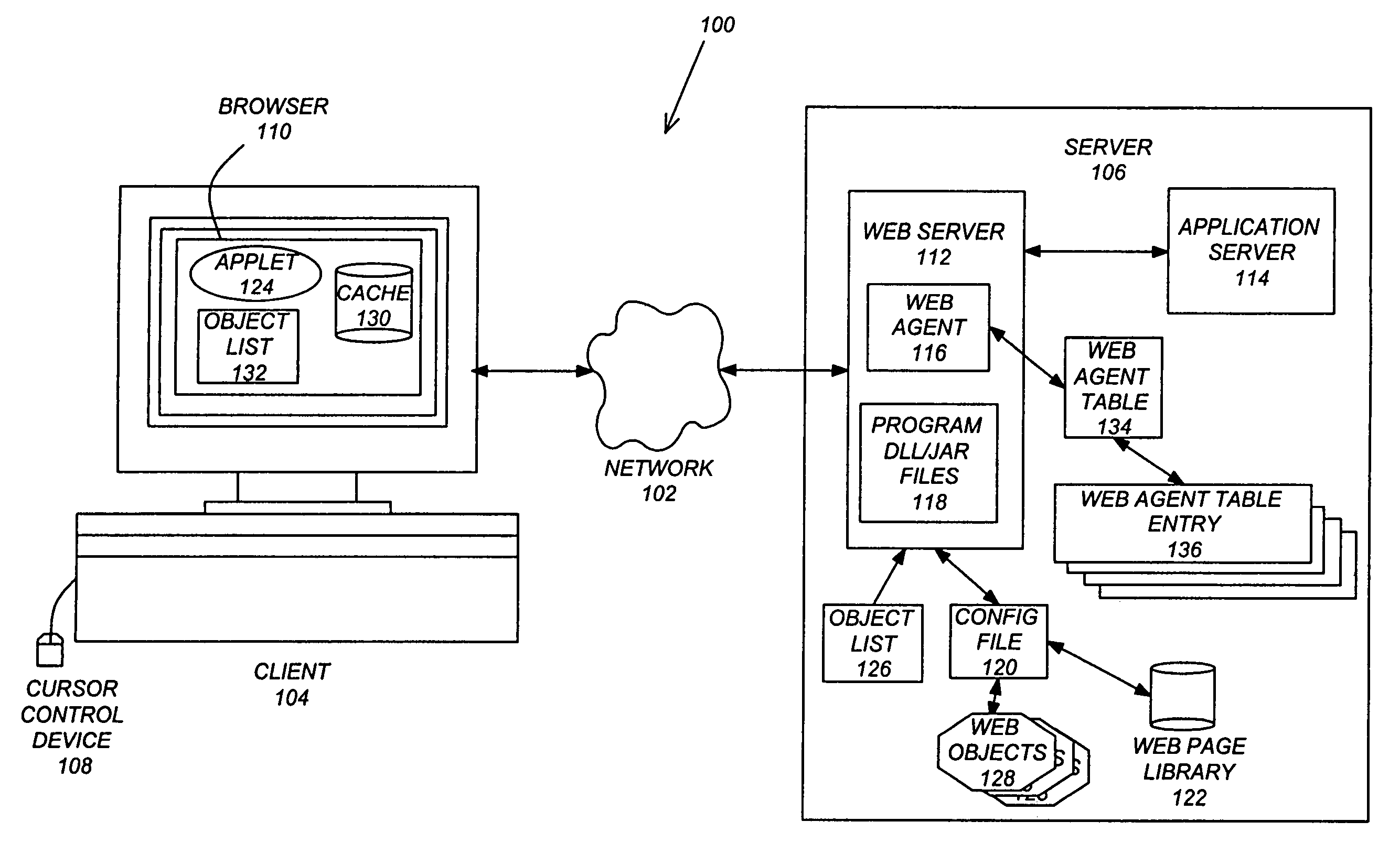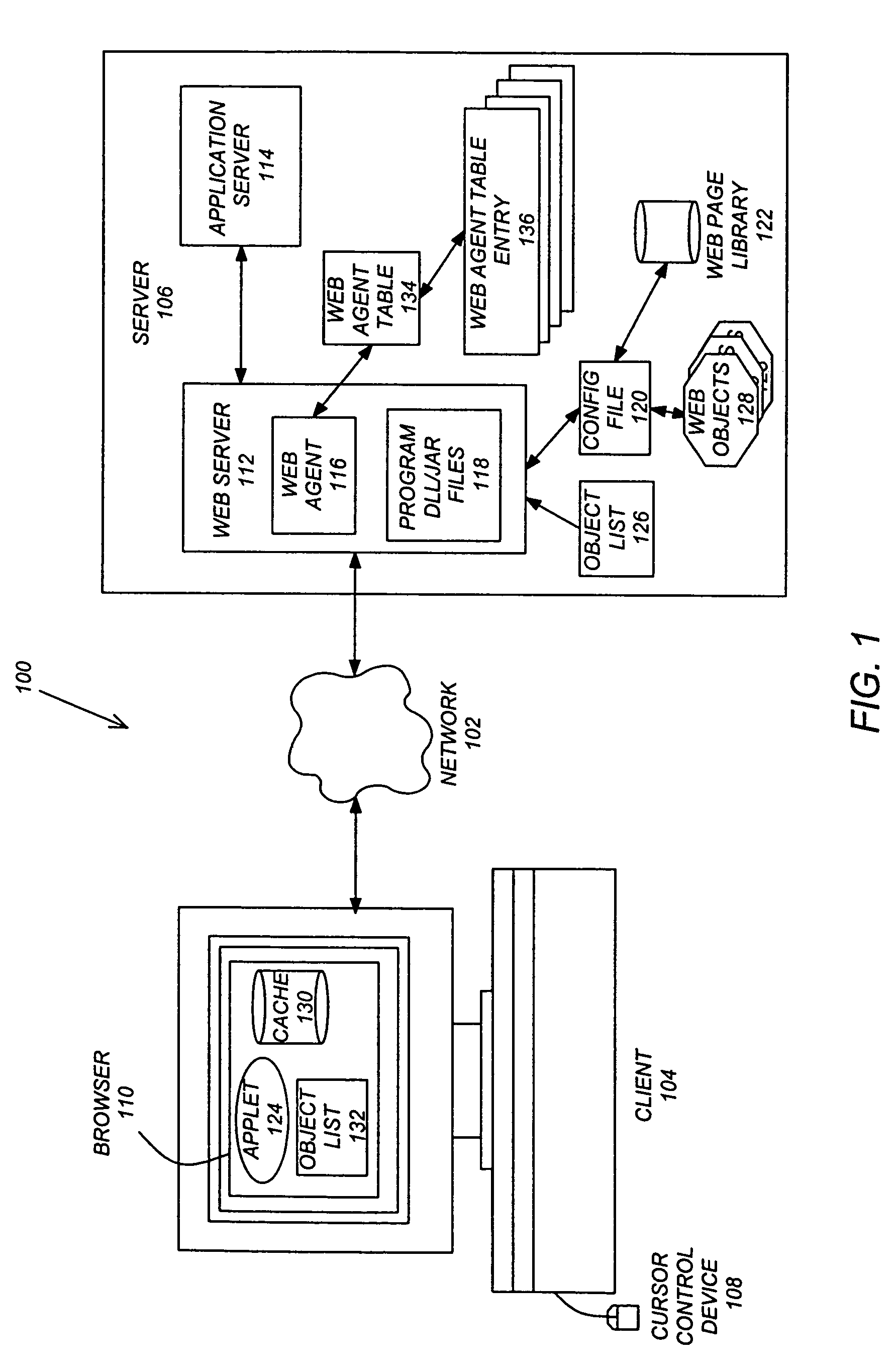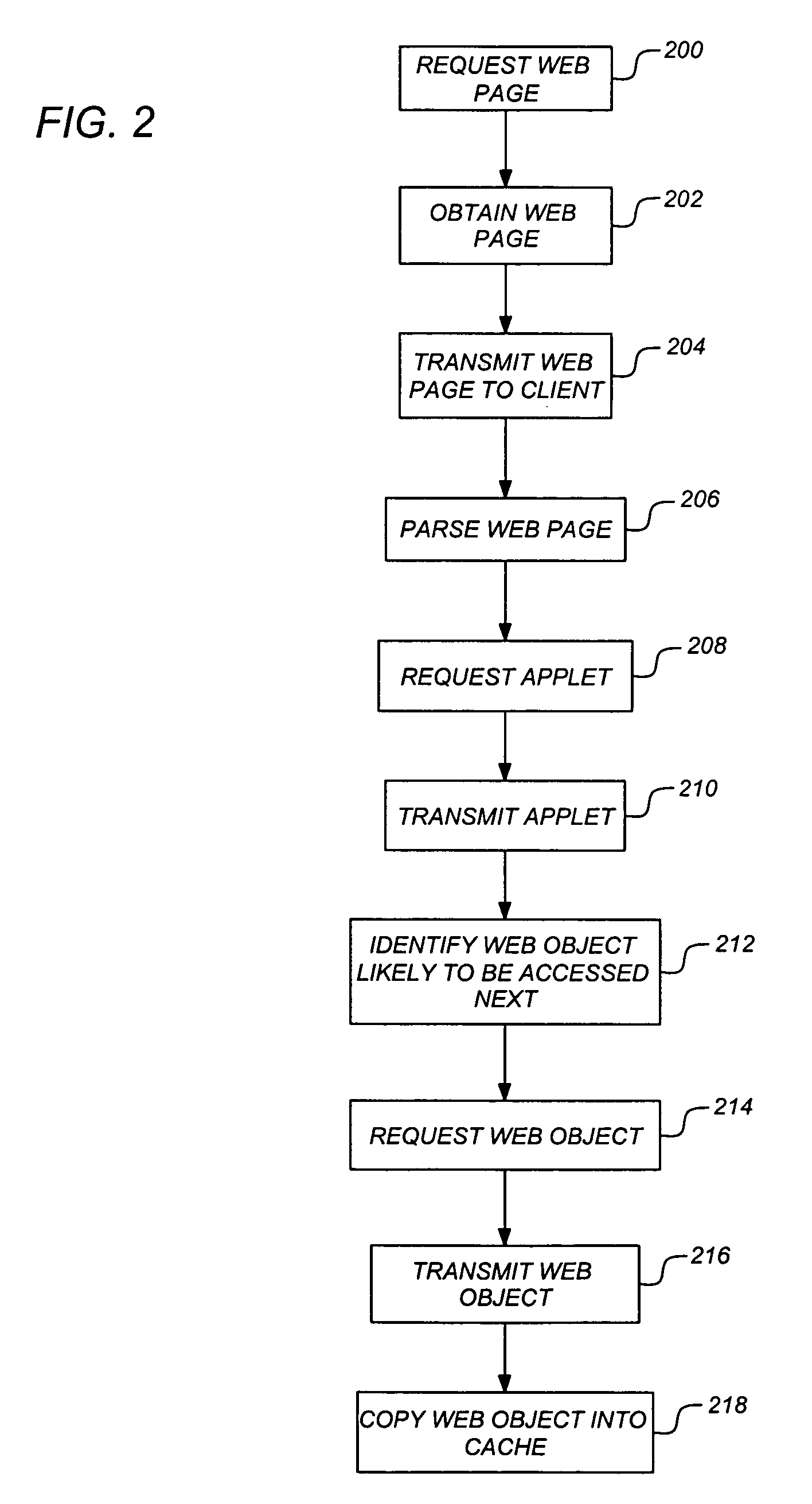Intelligent pre-caching on a network
a network and intelligent technology, applied in the field of computer hardware and software, can solve the problems of not optimizing computer resource utilization, and the access to subsequent web pages is very fast, and achieves the effects of reducing the amount of computer resources consumed, avoiding network delays, and facilitating web browsers to access objects faster
- Summary
- Abstract
- Description
- Claims
- Application Information
AI Technical Summary
Benefits of technology
Problems solved by technology
Method used
Image
Examples
Embodiment Construction
[0020]In the following description of the preferred embodiment, reference is made to the accompanying drawings, which form a part hereof, and in which is shown by way of illustration the specific embodiment in which the invention may be practiced. It is to be understood that other embodiments may be utilized and structural and functional changes may be made without departing from the scope of the present invention.
OVERVIEW
[0021]Faster access to web pages, from over the Internet, can be accomplished using an intelligent pre-caching or partial-intelligent pre-caching technique based upon the making available of web page objects, at the web browser, before they are needed.
[0022]Pre-caching takes place during the idle time that occurs when the web browser is displaying a web page and that time that occur, when a new web page is requested. An intelligent statistical technique is used to determine what the next web pages to be required are, and a technique is used to fetch these web pages...
PUM
 Login to View More
Login to View More Abstract
Description
Claims
Application Information
 Login to View More
Login to View More - R&D
- Intellectual Property
- Life Sciences
- Materials
- Tech Scout
- Unparalleled Data Quality
- Higher Quality Content
- 60% Fewer Hallucinations
Browse by: Latest US Patents, China's latest patents, Technical Efficacy Thesaurus, Application Domain, Technology Topic, Popular Technical Reports.
© 2025 PatSnap. All rights reserved.Legal|Privacy policy|Modern Slavery Act Transparency Statement|Sitemap|About US| Contact US: help@patsnap.com



